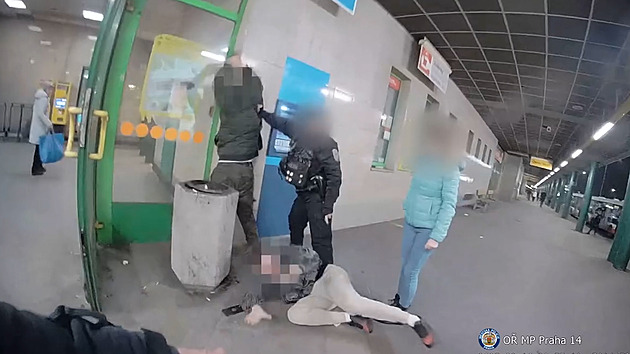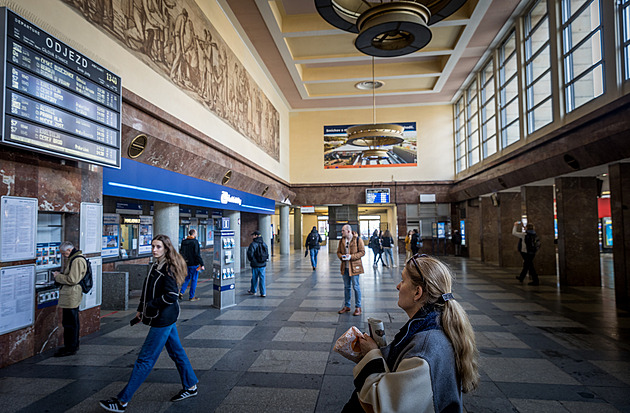Decoding the Synod on Synodality: CNA’s essential terminology guide
Bishops process into St. Peter's Basilica for the closing Mass of the first assembly of the Synod on Synodality on Oct. 29, 2023. / Credit: Vatican Media
Vatican City, Oct 1, 2024 / 13:05 pm (CNA).
As the Church kicks off the second session of the Synod on Synodality this week, it’s helpful to understand some key terms and concepts. This glossary aims to clarify important vocabulary related to the synod.What is a synod?A synod is traditionally a meeting of bishops gathered to discuss a theological or pastorally significant topic. The word “synod” comes from a Greek term meaning “to meet” or “to walk together” (“syn” = together; “hodos” = way or journey). From the first centuries, the term came to denote ecclesial assemblies of varying size and importance.The Synod of Bishops was created in 1965 by Pope Paul VI toward the end of the Second Vatican Council (1962–1965) to foster a close union and collaboration between the pope and the bishops of the whole world and provide information and reflection on questions and situations touching upon the internal life of the Church and its necessary activity in the world of today.Types of synodsPope Paul VI established three types of synods: Ordinary — for matters concerning the good of the universal ChurchExtraordinary — for matters of pressing concern to the ChurchSpecial — focused chiefly on the concerns of a region or continentOver the years, there have been 15 ordinary sessions, from 1967 to 2018; three extraordinary sessions, in 1969, 1985, and 2014; and 11 special synods, most recently in 2019, looking at the Pan-Amazonian region.The synod functioned under Paul VI’s 1965 establishing decree, with some minor modifications under Pope John Paul II, until the current pontificate. The current two-part Synod on Synodality is considered the 16th Ordinary General Assembly of the Synod of Bishops. Key termsaccountability The practice of taking responsibility for one’s actions and decisions, and being able to explain them.co-responsibility The shared responsibility of all baptized members in the Church’s mission. A central theme in the synodal discussions was clarified in the 2024 synod document to distinguish between roles flowing from holy orders and those arising from baptism.consensus In the context of the synod, consensus doesn’t mean uniformity or democratic majority but refers to the process of listening to one another in an environment of prayer and inner freedom.consultation A process of listening, especially as it relates to hearing from the faithful and listening to their perspectives on matters of the Christian life, before undertaking a decision. According to the Synod on Synodality organizers, “This current synod seeks to broaden the experience of ‘consultation’ to move toward a more synodal Church that more fully listens to and engages the entire people of God.”discernment The process of distinguishing or deciding between options, guided by the Holy Spirit. The synod organizers have stressed: “We listen to each other in order to discern what God is saying to all of us.”ecumenical dialogue The relationship between the Catholic Church and other Christian churches in pursuit of full, visible unity. facilitator A new role introduced in the Synod on Synodality. Facilitators are experienced individuals tasked with aiding the work in various moments of the assembly.fraternal delegates Representatives from other Christian churches and ecclesial communities invited to participate in the synod as observers.general congregation The assembly where all delegates, including the pope, participate in discussions.Instrumentum Laboris Latin for “working document.” It serves as the basis for discussions during the synod. For the 2024 session, the second Instrumentum Laboris was published on July 9, 2024, and is 32 pages long. It clarified the Holy Father’s expressed desire for the deliberations of the synod to be more focused on concrete proposals for synodality rather than controversial topics. living tradition The set of revealed truths — apostolic tradition — regarding faith and morals that are not contained in sacred Scripture but are transmitted faithfully and continuously from one generation to the next under the living teaching authority of the Catholic Church. missio ad gentes The mission of the Catholic Church to bring the Gospel to those who do not know Christ or have abandoned the faith.parrhesia A Greek term denoting courage or boldness, specifically the fearlessness that comes from the Holy Spirit. It was embodied in the hearts of the apostles at Pentecost and the courage it took among the early Christians to go out and proclaim the Gospel across the ancient world.penitential rite A newly introduced element in the 2024 synod, where participants engage in a collective act of repentance and seeking forgiveness. This practice underscores the Church’s commitment to transparency and accountability and includes several notable innovations including the idea of “s
Bishops process into St. Peter's Basilica for the closing Mass of the first assembly of the Synod on Synodality on Oct. 29, 2023. / Credit: Vatican Media
Vatican City, Oct 1, 2024 / 13:05 pm (CNA).
As the Church kicks off the second session of the Synod on Synodality this week, it’s helpful to understand some key terms and concepts. This glossary aims to clarify important vocabulary related to the synod.What is a synod?A synod is traditionally a meeting of bishops gathered to discuss a theological or pastorally significant topic. The word “synod” comes from a Greek term meaning “to meet” or “to walk together” (“syn” = together; “hodos” = way or journey). From the first centuries, the term came to denote ecclesial assemblies of varying size and importance.The Synod of Bishops was created in 1965 by Pope Paul VI toward the end of the Second Vatican Council (1962–1965) to foster a close union and collaboration between the pope and the bishops of the whole world and provide information and reflection on questions and situations touching upon the internal life of the Church and its necessary activity in the world of today.Types of synodsPope Paul VI established three types of synods: Ordinary — for matters concerning the good of the universal ChurchExtraordinary — for matters of pressing concern to the ChurchSpecial — focused chiefly on the concerns of a region or continentOver the years, there have been 15 ordinary sessions, from 1967 to 2018; three extraordinary sessions, in 1969, 1985, and 2014; and 11 special synods, most recently in 2019, looking at the Pan-Amazonian region.The synod functioned under Paul VI’s 1965 establishing decree, with some minor modifications under Pope John Paul II, until the current pontificate. The current two-part Synod on Synodality is considered the 16th Ordinary General Assembly of the Synod of Bishops. Key termsaccountability The practice of taking responsibility for one’s actions and decisions, and being able to explain them.co-responsibility The shared responsibility of all baptized members in the Church’s mission. A central theme in the synodal discussions was clarified in the 2024 synod document to distinguish between roles flowing from holy orders and those arising from baptism.consensus In the context of the synod, consensus doesn’t mean uniformity or democratic majority but refers to the process of listening to one another in an environment of prayer and inner freedom.consultation A process of listening, especially as it relates to hearing from the faithful and listening to their perspectives on matters of the Christian life, before undertaking a decision. According to the Synod on Synodality organizers, “This current synod seeks to broaden the experience of ‘consultation’ to move toward a more synodal Church that more fully listens to and engages the entire people of God.”discernment The process of distinguishing or deciding between options, guided by the Holy Spirit. The synod organizers have stressed: “We listen to each other in order to discern what God is saying to all of us.”ecumenical dialogue The relationship between the Catholic Church and other Christian churches in pursuit of full, visible unity. facilitator A new role introduced in the Synod on Synodality. Facilitators are experienced individuals tasked with aiding the work in various moments of the assembly.fraternal delegates Representatives from other Christian churches and ecclesial communities invited to participate in the synod as observers.general congregation The assembly where all delegates, including the pope, participate in discussions.Instrumentum Laboris Latin for “working document.” It serves as the basis for discussions during the synod. For the 2024 session, the second Instrumentum Laboris was published on July 9, 2024, and is 32 pages long. It clarified the Holy Father’s expressed desire for the deliberations of the synod to be more focused on concrete proposals for synodality rather than controversial topics. living tradition The set of revealed truths — apostolic tradition — regarding faith and morals that are not contained in sacred Scripture but are transmitted faithfully and continuously from one generation to the next under the living teaching authority of the Catholic Church. missio ad gentes The mission of the Catholic Church to bring the Gospel to those who do not know Christ or have abandoned the faith.parrhesia A Greek term denoting courage or boldness, specifically the fearlessness that comes from the Holy Spirit. It was embodied in the hearts of the apostles at Pentecost and the courage it took among the early Christians to go out and proclaim the Gospel across the ancient world.penitential rite A newly introduced element in the 2024 synod, where participants engage in a collective act of repentance and seeking forgiveness. This practice underscores the Church’s commitment to transparency and accountability and includes several notable innovations including the idea of “s




















































